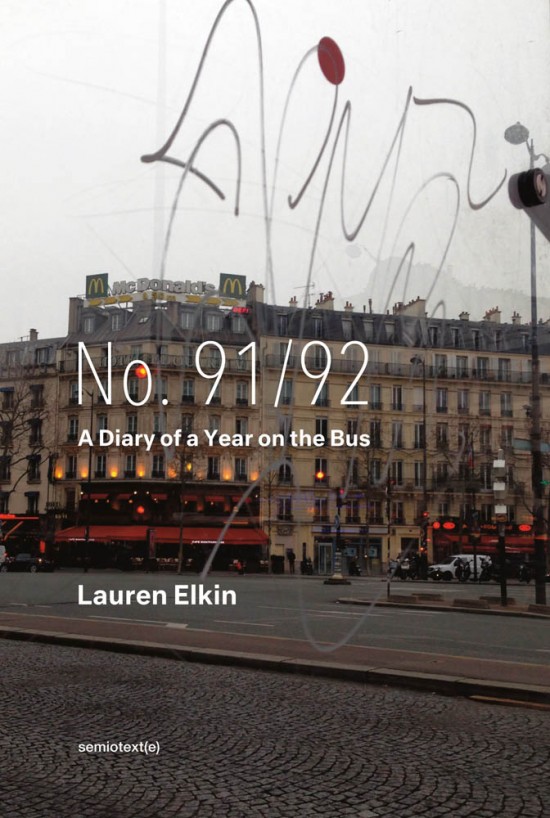
Is there a canon of literature inspired by city buses? This was a question that first came to my mind when reading Lauren Elkin’s recent No. 91/92: A Diary of the Year on the Bus, a chronicle of Elkin’s daily travels across Paris over the course of a turbulent year. The only other work that came to mind was Magnus Mills’s The Maintenance of Headway — a work that blended Mills’s trademark deadpan with reflections gleaned from his time working as a bus driver.
Turns out Elkin’s book featured some other nods to books about or inspired by buses, including works by Hervé Guibert and Georges Perec. But her work here makes a fine case for itself at the head of a theoretical bus-canon syllabus, both for what Elkin conveys over the course of the book and for what is left of the page and memorably implied.
Elkin states the circumstances under which this book was written up front: specifically, the chapters were each composed on her iPhone as she rode the bus to work over the course of one academic year, which was turbulent for reasons on both a personal and city-wide scale.
Readers familiar with Elkin from her other longer works of nonfiction — Flâneuse and The End of Oulipo? — will find a more terse style here. These are, after all, brief observations made while on the bus, rather than the longerform cultural criticism that Elkin accomplished so memorably in her other books. But even in this context, Elkin makes concise use of a host of art and literary history. “One Hausmannian building every couple of minutes,” she notes in one entry, written in slow traffic. “A Parisian way of measuring speed.”
This is one of several ways in which Elkin evokes the wider city while remaining focused on one particular route through it. Taking a particularly narrow focus while still alluding to larger circumstances isn’t an easy combination to pull off, and the examples that come to mind are more maximal in their construction — Uwe Johnson’s Anniversaries, for instance. Here, the balance between presence and absence feels like a filter, like a method of seeing — it’s not unlike the way traveling by bus mediates one’s way of experiencing a particular landscape.
Compared to rail systems, buses don’t get nearly enough credit for the work they do or the people they connect. Reading No. 91/92 makes for an apt reminder of the importance of this form of transit, as well as further evidence of now nearly anything can inspire a memorable work of art.
***
No. 91/92: A Diary of a Year on the Bus
by Lauren Elkin
Semiotext(e); 128 p.
Follow Vol. 1 Brooklyn on Twitter, Facebook, and sign up for our mailing list.
